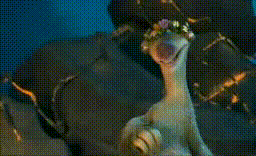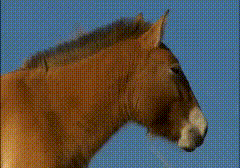CIVILISATION'S HABITUAL RUTS
Other animals repeat instinctive behaviour – humans repeat learnt behaviour.
Civilisation depends on focusing to learn, copy, and repeat behaviour, skills, and ideas. Focusing is our blind and compulsive, basic rut. Civilised humans never actively use their panoramic senses.
Skills and Beliefs
In traditional times humans were materially insecure, often cold and hungry – but we had a bigger brain than other animals; an intellect which put ideas together.We made tools, developed skills, clothes, and shelters for a home with a fire. We cooked meat and then celebrated with hunting tales. We looked at the stars, questioned deeper meanings, used our imagination, and developed an understanding of life.
To think, learn, remember, and then repeat all our skills and beliefs, we had to focus. All of our social and practical skills, knowledge, and beliefs, are based on our focusing abilities.
Our civilisation is happening as a result of what we have learnt by using our senses in their focused mode. Focusing got things done.
Beliefs and Identity
Our practical skills were easily and readily exchanged with neighbouring tribes. Occasionally we adopted beliefs, especially when conquered by tribes with more powerful Gods, but essentially our beliefs remained our own. Beliefs were always central to human identity. We lived and died for our beliefs.
Beliefs were always central to human identity. We lived and died for our beliefs.
Traditionally we worshipped openly and together. We had a vivid consciousness of a common spiritual essence, and doing things for the common good.
But since the 1,600s with the questioning of traditional beliefs, came the development of individual freedom of thought and a multiplicity of modern beliefs. Slowly, our sense for psychological safety and purpose in life, has become a matter of individual choice.
And with that, we've lost our unquestioned and often adored common beliefs with their obvious subsequent goals and clear focal points in life.
For ideas to feel real they need confirmation from other humans who can understand the ideas. And these days, there are so many choices and simply not enough mutual confirmation to go around... and there never can be.
We've lost the safety of an automatic mutually and culturally confirmed idea of knowing who and why we are.
We are facing a form of collective psychological insecurity, which no species or any previous culture has ever experienced or even imagined.
We have no idea what's really happening or why (we blame politics and each other), we accept it as inevitable and normal.
Even if we could all develop Gandhi's and Mandela's sense of empathy and respect for others – it could never replace the security of the mutual, united and unquestioned confirmation of all the members of an entire local social group.
And our cultural insecurity has become its own cause, always generating more of itself. It's exponential.
In the 1900s the horse vanished from the streets, and an entire 4,000-year-old secure global balance and established structure of specialised social identities vanished.
We could look after animals with empathy, carts with common sense, but cars and the industrial world needed technical and abstract skills.
Our early education became an intensive rational and analytical form of focused attention on abstract words and images. And as we are continually required to adapt quicker to the all new stimuli which we create, human ingenuity has now given us Artificial Intelligence to accelerate our lives even faster.
The incredible momentum of modern civilisation leaves us in a ridiculous situation, where like Alice's Red Queen, there simply isn't any time left to slow down because there is so much more to keep repeating.
If we continue to experience life exclusively from a focused perspective, our thinking and our beliefs will become even more diverse and fragmented. The social fracturing will become even more extreme.
The Panaral Panoramic sensing, the parasympathetic nervous system, and the lower brain. See The Panara Systems for details.
World
 All other animals alternate their focused activity with periods of pure
panaral activity.
All other animals alternate their focused activity with periods of pure
panaral activity. They stop still for a moment and practice panaral awareness.
One panoramic moment automatically stops the never-ending patterns of thinking, learning, wanting, planning and doing which are causing the pace of life to overrun our modern cultures.
Panavision is inherently here and now, directly aware of the environment as a whole.
And pre-emptive listening instantly neutralises all repetitious thought patterns.
There are other ways to stop thinking, be directly in contact with our environment, and experience a sense of safety and wholeness, but none are so effective, direct, natural, or easy to learn.
Throughout evolution animals have relied on being able to tune their senses panarally in order to survive.
Panaral awareness makes activity successful among predators, but that's another story. Among vulnerable animals panaral awareness makes focused activity safe.
Panaring and focusing are like two good friends walking along together. Focusing does all the talking and decides which way to go. Panaring walks in front to check the way is clear. Without panaring, focusing would talk to itself and get lost.
Humans have involuntarily suppressed practically all of our panaral talents.
Belonging and Safety
The central fallacy of our focused thinking is the impression that life happens in terms of subjects doing verbs to objects. Focusing is a perspective on life with its own inbuilt logic, and humans developed it brilliantly. It explained lots and got things done.But these days, in the civilised world, trying to find a sense of belonging and safety in a relationship with God, family, or lover, is full of needless problems, it is simply an inefficient way to feel whole.
Humans have lost the sense of belonging in our immediate social and cultural group; and simultaneously we've lost a background feeling for the wholeness of life.
Panaral awareness gives us what we're missing.
Panarally, subjects and objects are of no conqeuence. It has totally different priorities. It's useless at doing things, but what it gives us is a feeling of the underlying wholeness of life; it's an in-depth feeling of belonging in our environment.
Please continue with Displacement Behaviour in Humans
Back to Chapter Three : Civilisation's Habitual Ruts
Back to THE PANORAMA SENSES Priority Pages